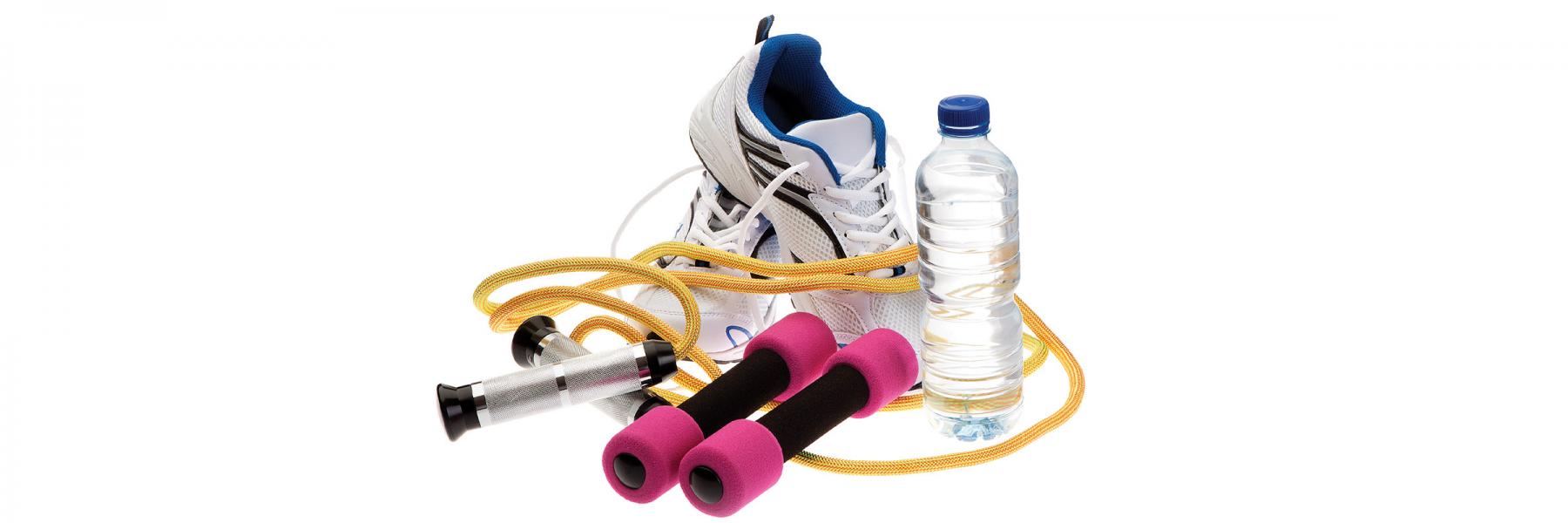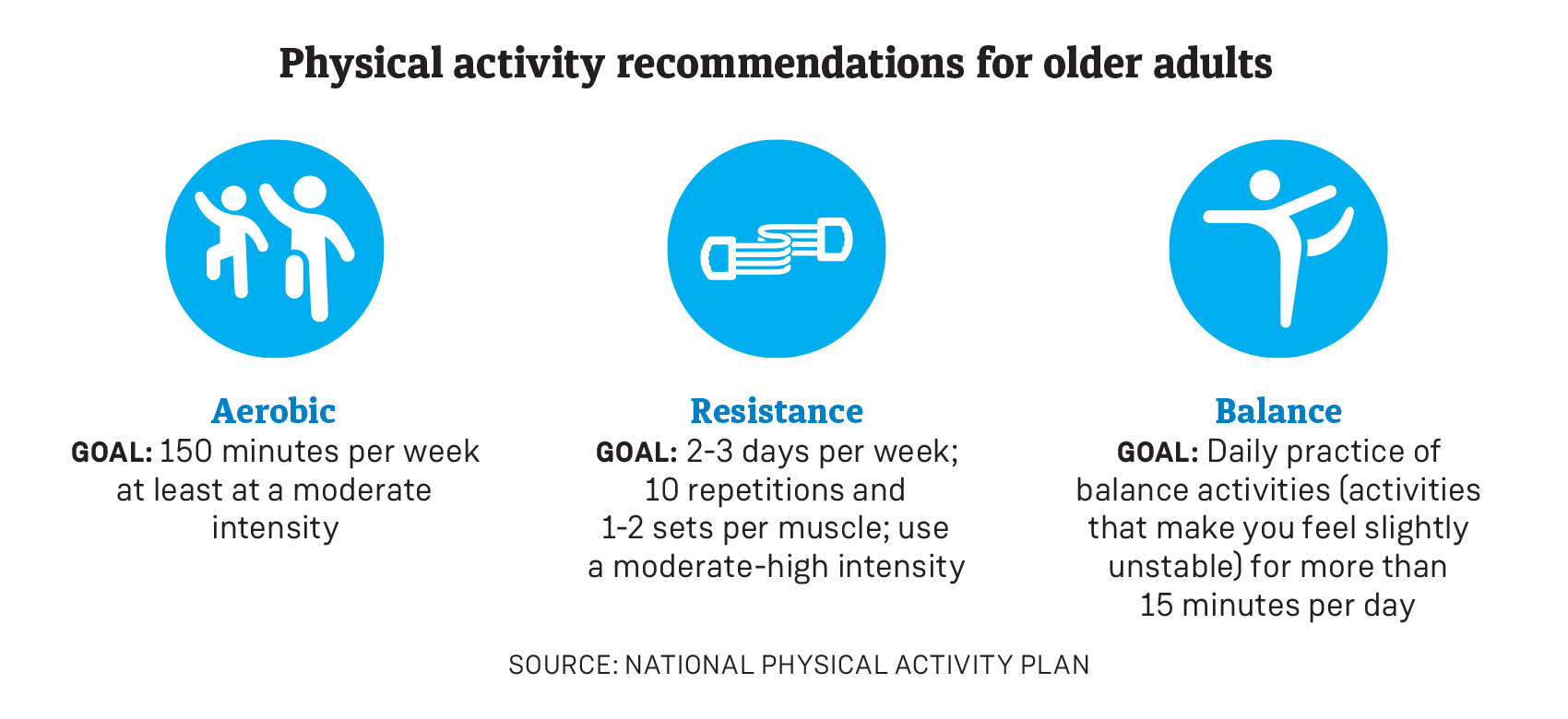As of the writing of this article, more than 250 days have passed since The World Health Organization declared the novel coronavirus (COVID-19) outbreak a global pandemic. Sadly, with over a quarter of a million Americans dead from the virus and rising numbers of cases, cities across the country have reinstated curfews, banned indoor activities, and limited group gatherings.
While these measures are undoubtedly important to slow the virus spread, these guidelines also have the side effect of limiting social interaction, reducing opportunities for physical activity and exercise, and causing greater isolation, significantly impacting physical and mental health.
Within 30 days of the March 11 pandemic declaration, worldwide physical activity dropped nearly 27%. Reduced physical activity can be detrimental particularly for older adults who even pre-COVID were not meeting recommended physical activity guidelines.
Rates of inactivity are even worse among those aging with HIV. A 2018 study found that people aging with HIV only achieved 3,442 steps per day (the goal being 10,000) and attained only 35 minutes of moderate-vigorous physical activity each week (the goal being 150 minutes). People aging with HIV spent 75% of their day in sedentary (sitting or lying down) activities. The COVID-19 pandemic has only worsened these rates of inactivity.
HIV is associated with muscle wasting, peripheral neuropathy and balance dysfunction, and higher rates of fatigue. Independently, normal aging also results in reduced muscle strength, decreased nerve function leading to more balance impairments, and reductions in cardiovascular health that limit endurance and create more fatigue. Together, people aging with HIV face a form of “double jeopardy”—experiencing the physiological changes due to HIV as well as normal age-related changes. The end result is that aging with HIV is associated with even greater losses of muscle strength, increased risk for falls, and lower endurance than peers of the same age who are aging without HIV. Unfortunately, being inactive and not participating in regular exercise only accelerates these normal age-related changes, leading to greater risks for falling, loss of independence, cognitive decline, and illnesses such as cardiovascular disease, diabetes, and cancer.
The good news is that it is never too late to get more active and there are solutions to becoming healthier safely in the time of COVID.
While fitness centers may be closed and winter weather limits outdoor activities, there are ways to exercise and be more active in your home. YouTube is a great source of exercise programs, and a search of “fitness class for seniors” will bring up a variety of free programs of various lengths and fitness styles to try. Silver Sneakers offers a variety of on-demand exercise classes for free with certain Medicare insurance plans. You can see if you are an eligible member at silversneakers.com. CJE SeniorLife offers a variety of evidence-based falls prevention group classes on Zoom and over the telephone. A listing of their programs is available at cje.net/falls. Even household objects like laundry detergent, gallons of water, or heavy books can serve as weights for resistance exercise.
Research shows that those aging with HIV should participate in a combination of aerobic (endurance), resistance (strength-training), and balance exercises.
Aerobic exercise
Aerobic exercise elevates your heart rate and breathing rate to keep your heart, lungs, and circulatory system healthy. Examples of aerobic exercise include activities such as walking, riding a bike, jogging, dance, and swimming. Older adults aging with HIV should strive to achieve at least 150 minutes of aerobic exercise each week. For the best health benefits, aerobic exercise should be done at a minimum of a moderate-intensity level, a level where you could talk during the activity, but not sing. In contrast, a vigorous-intensity level would be where you could talk, but only for a few words before needing to take a breath. If you cannot reach 150 minutes per week right now, do what you can. Every minute counts and each additional minute of activity provides even more health benefits.
Resistance exercise
Resistance exercise (strength-training activities that build muscle) should be done two-three days per week at a moderate-high intensity for 10–12 repetitions and 1–2 sets for major muscle groups (biceps, chest, quadriceps, and glutes). To build strength, you need to lift a weight that provides a challenge. If you are unsure of where to start, aim for a weight that you can lift at least 10 times comfortably. If you can lift the weight more than 15 repetitions, it is likely too light and if you can’t lift at least 8 times, it is likely too heavy. It is also important to note that when starting resistance exercise, you may feel a little sore in the 24–48 hours after exercise. This soreness is a normal response to activity, but sharp pain should not be.
Balance exercises
Finally, balance exercises are activities that make a person feel a little unsteady and off-balance—activities such as standing with feet in different positions, standing on an unsteady surface, or adding in movements like turning your head and closing your eyes. Addressing balance is important to prevent falls, which can lead to significant injuries affecting mobility, and even death.
Balance exercises should be done daily. Research shows it will take about 50 hours of practice to see a significant improvement in balance so it will take time and effort to improve this area. Because many people aging with HIV face co-existing conditions such as peripheral neuropathy which affects balance, seeing a physical therapist can be a great place to get a tailored balance assessment and exercise program. Every state in the U.S. allows for evaluation and some form of treatment without a physician referral so you can access a physical therapist directly for this care. To find a physical therapist, go to apta.org/findaPT.
Nutrition
It is also important to maintain good nutrition, especially during the COVID-19 pandemic. Because of muscle loss that occurs with HIV, protein intake, in particular, is especially important to maintain strength, energy, and immune function. In general, older adults and those aging with HIV need 1.0–1.2 grams of protein per kilogram of body weight each day (1 kilogram is about 2.2 pounds). While meat is typically the first protein source that comes to mind, protein is also found in fish, chicken, dairy, beans, nuts, and tofu, making it possible for vegetarians and vegans to also have adequate protein intake.
Community
In the AIDS epidemic of the 1980s, gay men (in particular) faced serious shame and stigma which helped unify the community in the face of crisis. In our current COVID epidemic, social distancing and isolation necessary to prevent disease spread make it harder to unify, and the impact on mental health has been severe. People over the age of 65 have been particularly hard hit given that they are at a higher risk for contracting COVID and account for 80% of all COVID-related deaths.
According to a Kaiser Family Foundation report, nearly 25% of people over the age of 65 report anxiety or depression due to COVID. While there has not been research yet on the population aging with HIV, it is highly likely that they are facing substantial mental health challenges as well. One study on young people living with HIV in Asia and the Pacific found that 70% felt anxious or very anxious about COVID.
Mental health needs should be addressed with a healthcare provider so that you can access necessary resources and appropriate care from a counselor, psychologist, or psychiatrist. There is some evidence that participation in physical activities can improve mood. Research shows that regular physical activity reduces anxiety, lessens symptoms of depression, and builds confidence in one’s physical function—simply put, physical activity tends to make you feel more confident and better about yourself!
Getting started
So, how can you get started?
First, review the guidelines for exercise and physical activity participation (see above) and see how your current activity levels match to the guidelines. If you are not currently meeting these guidelines, that’s okay! Every minute of activity counts towards reaching these levels and you should aim to increase your activity by 5% each week.
Second, find physical activities that you enjoy! Especially with free content available on the internet, try a variety of different classes or exercise programs—Zumba, yoga, Pilates, dance, walking, and weightlifting, to name a few. If you don’t enjoy a particular activity, try another class or a different instructor and find something that brings you enjoyment! Research shows that greater enjoyment with activity predicts future physical activity participation, so if you want to create an exercise habit, find activities you enjoy and keep them ongoing!
At the end of the day, the best exercise or physical activity program is one you actually do consistently. And for optimal health benefits when aging with HIV, strive to achieve the physical activity guidelines through creative and safe solutions during the COVID-19 pandemic.

photo by Barb Levant Photography
Margaret Danilovich is the senior director of the Leonard Schanfield Research Institute at CJE SeniorLife and an adjunct assistant professor at Northwestern University, where she directs the dual degree Master of Public Health and Doctor of Physical Therapy program. A physical therapist by background, she has practiced her entire career with older adults. Her current research has been funded by the NIH, Retirement Research Foundation, and Third Coast Center for AIDS Research and focuses on exercise interventions for older adults with frailty.



